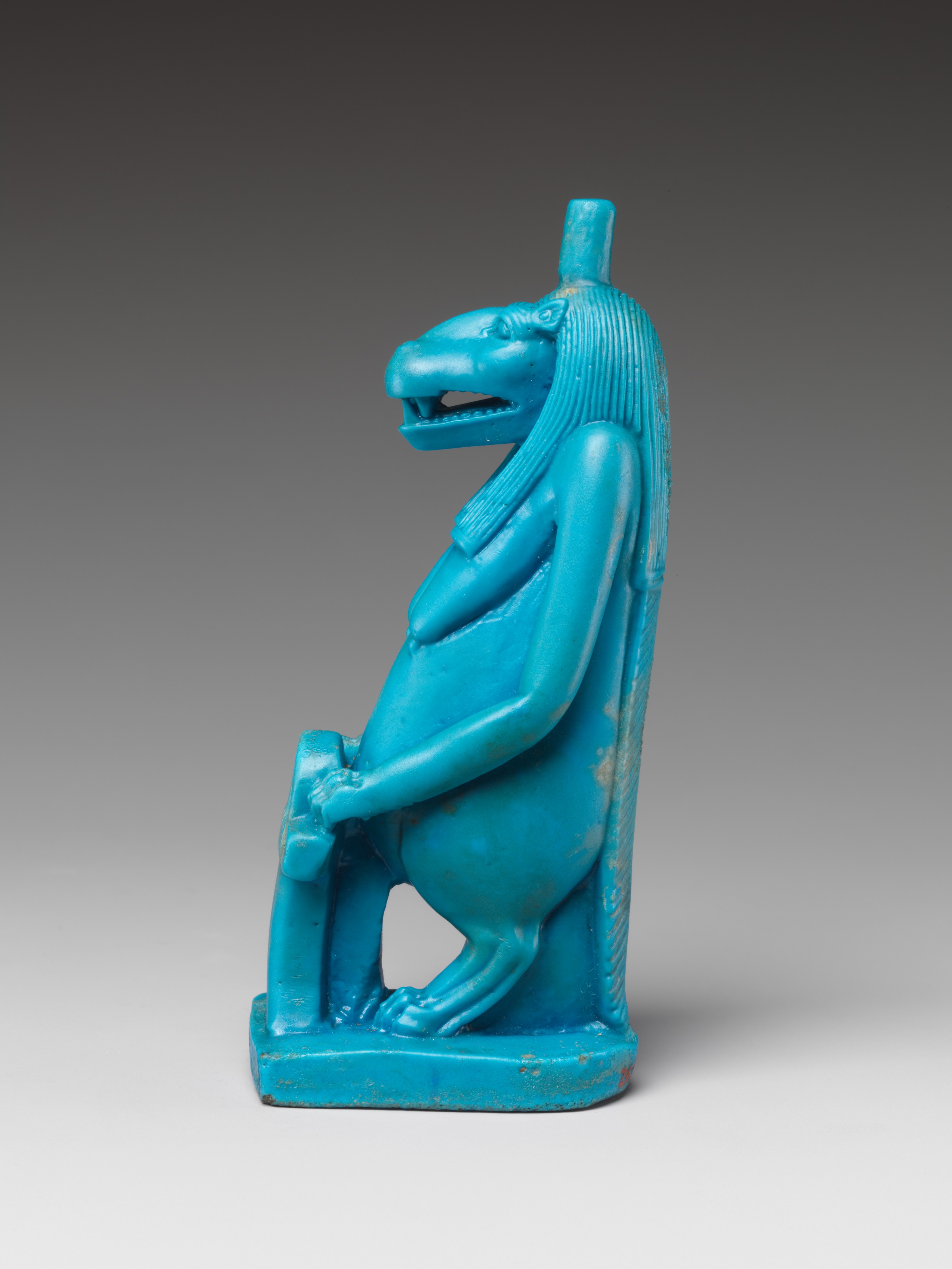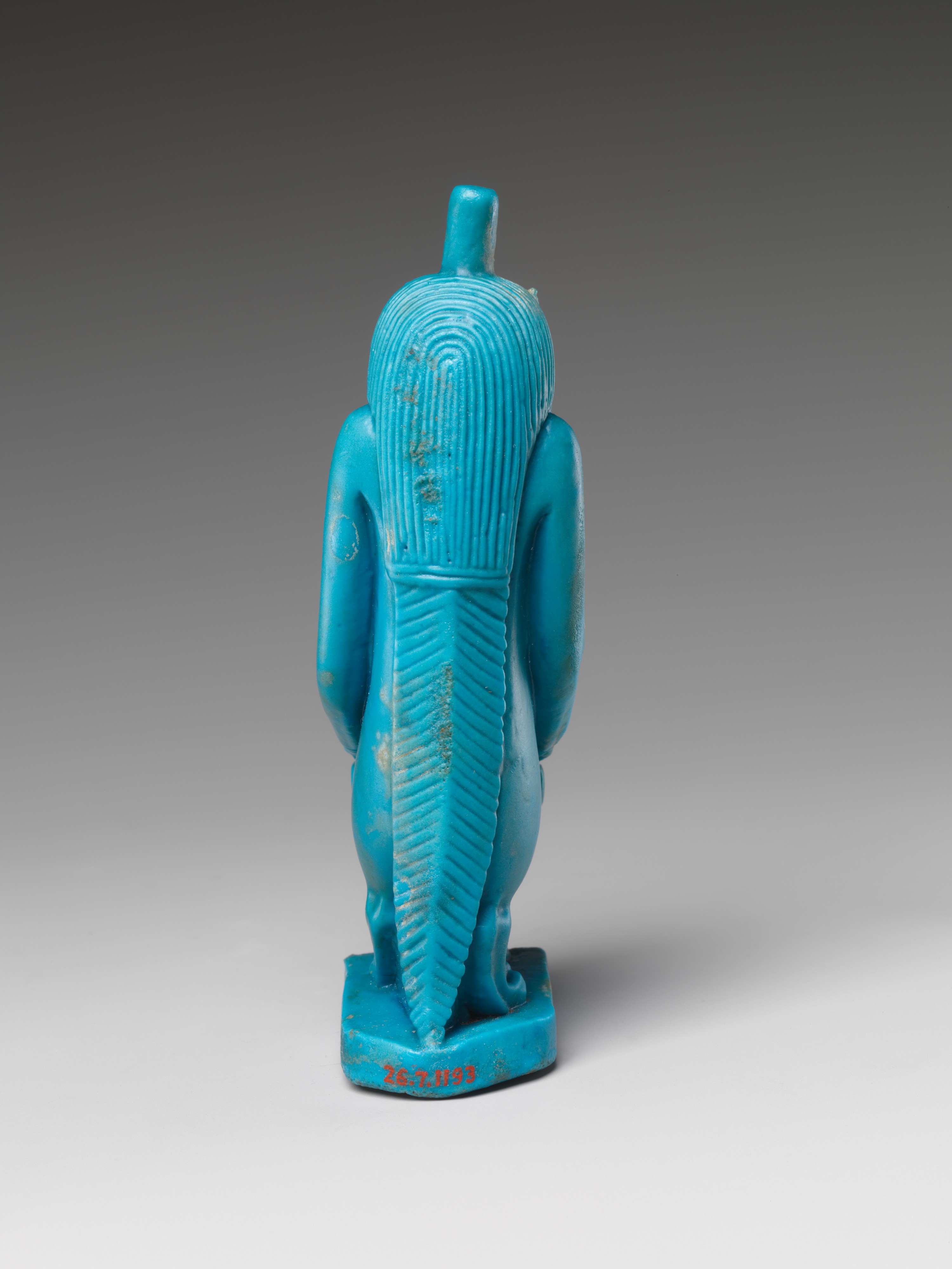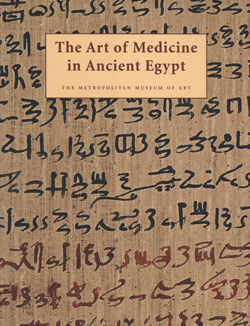Statuette of the Goddess Taweret
Ptolemaic Period
In all likelihood, this statuette represents the goddess Taweret, whose domain was the protection of pregnant women, especially during childbirth. Her menacing image, intended to frighten away demons and other deadly creatures, combines human, hippopotamus, crocodile, and lion attributes. The post on her head probably supported a metal crown in the shape of a sun disk, surmounted by either feathers or horns. The stylized symbol under her front paws can be best interpreted as the sa amulet. Although Taweret was worshipped in both secular and sacred settings, this statuette's almost perfect condition, exceptional craftsmanship, size, and iconography suggest that it was created for a temple—possibly for the "birth house" where this goddess was linked with Isis.
In the past, the piece was identified as true glass. While it is difficult to identify the material precisely, pooling of glaze around the feet and the slightly grainy structure visible in a few places strongly argue for glassy faience. Possibly the overall form was created in a mold, but details of the head and extremities, which convey the deity's power and intimidating nature, must have been modeled by hand. The pale blue color of the glaze assists in assigning a Ptolemaic Period date.
Due to rights restrictions, this image cannot be enlarged, viewed at full screen, or downloaded.
This artwork is meant to be viewed from right to left. Scroll left to view more.










